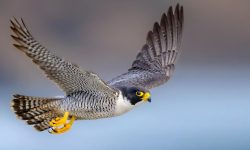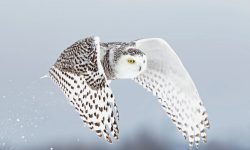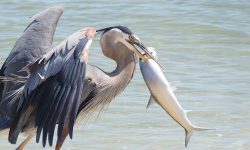Discovering a dead bird without a head can be both shocking and unsettling. While it might seem like a bizarre or sinister event, there are logical explanations behind this phenomenon.
In this article, we will explore the potential reasons for finding a decapitated bird, the predators responsible, symbolic interpretations, and what actions you should take.
Why Would a Bird Be Found Without Its Head?

There are several natural and environmental factors that could explain why a dead bird is found headless. These reasons range from predation to territorial disputes and even environmental hazards.
Predators That Target Birds’ Heads
One of the most common reasons a bird is found without its head is predation. Many predators have evolved to attack and consume specific parts of their prey, and in some cases, the head is a primary target.
Owls
Owls are notorious for decapitating their prey. These raptors prefer to eat the head first because it contains a high concentration of nutrients, particularly in the brain. Owls often hunt smaller birds, rodents, and insects, leaving behind a headless body.
Hawks and Falcons
Birds of prey like hawks and falcons are skilled hunters that strike with incredible speed. When they catch a bird, they may remove the head to make the body easier to carry or consume.
Cats (Domestic and Wild)
Both domestic cats and wild felines, such as bobcats, have a tendency to play with their prey. Cats sometimes decapitate birds either during hunting practice or out of instinct. They may leave the body behind while taking the head as a trophy.
Raccoons and Other Scavengers
Raccoons, foxes, and other scavenging mammals often consume the most nutrient-rich parts of their prey first. If a bird is already dead, these animals may eat the head and leave the rest of the body intact.
Crows and Magpies
Surprisingly, some birds, including crows and magpies, may attack or scavenge other birds. They often peck at the head or eyes first, either as a territorial display or for easy access to soft tissue.
Territorial Fights Between Birds
Birds can be highly territorial, especially during breeding seasons. Aggressive species like crows, hawks, and even some songbirds engage in violent disputes that can result in injuries or death. In extreme cases, a rival bird may remove the head of its opponent as a dominance display.
Diseases and Environmental Factors
While predation is the most common reason, there are also environmental factors to consider.
Disease and Parasites
Some birds die from diseases or parasitic infections that weaken their bodies. After death, scavengers may consume only certain parts, including the head, due to its soft tissues.
Power Line Collisions
Birds that collide with power lines may suffer injuries that result in decapitation. The force of impact can be severe enough to separate the head from the body.
Human-Related Causes
Sometimes, headless birds are the result of human activities. Certain cultural or ritualistic practices involve the removal of a bird’s head. Additionally, accidents involving lawnmowers or industrial machinery can also lead to decapitated birds.
Is a Headless Bird a Bad Omen? Symbolic Meanings
Throughout history, people have associated dead animals with spiritual or superstitious meanings. A dead bird without a head can symbolize several things depending on cultural beliefs.
Symbolism in Different Cultures
- Bad Omen – Many cultures see a headless bird as a sign of misfortune or impending bad luck.
- Transformation and Change – In some beliefs, a decapitated bird represents a major life transition, signaling an end and a new beginning.
- Spiritual Messages – Some people believe that finding a dead bird without a head could be a message from the spirit world or a warning to pay attention to one’s surroundings.
What to Do If You Find a Dead Bird Without a Head?
If you come across a headless bird, here are the steps you should take:
Avoid Direct Contact
Dead birds may carry diseases, so avoid touching the body with your bare hands. Use gloves or a plastic bag if you need to handle it.
Observe the Surroundings
Look around for signs of predators or hazards that may have caused the bird’s death. This can help determine if it was a natural occurrence or something unusual.
Dispose of the Bird Properly
If the bird is in your yard or an urban area, dispose of it safely:
- Use a shovel or gloves to place the bird in a sealed plastic bag.
- Dispose of it in a trash bin, or check local guidelines for dead animal disposal.
Report Unusual Findings
If you notice multiple headless birds in an area, consider reporting it to local wildlife authorities. This could indicate a predator presence, a disease outbreak, or even illegal hunting activity.
Consider Setting Up a Wildlife Camera
If headless birds frequently appear in your yard, setting up a wildlife camera may help identify the culprit. This can provide insights into whether a domestic cat, an owl, or another predator is responsible.
Preventing Bird Predation in Your Area
If you’re concerned about bird safety in your yard, there are several ways to reduce predation risks:
Keep Cats Indoors
Domestic cats are responsible for killing millions of birds annually. Keeping cats inside or using cat collars with bells can help reduce bird fatalities.
Install Bird Feeders with Protection
Place bird feeders in locations that make it difficult for predators to ambush birds. Adding baffles or placing feeders on tall poles can deter attacks.
Reduce Artificial Light at Night
Many nocturnal predators, like owls and raccoons, rely on artificial light to hunt. Reducing unnecessary outdoor lighting can minimize bird deaths.
Trim Overgrown Bushes and Hiding Spots
Predators often hide in tall grass or thick bushes before ambushing birds. Keeping your yard well-maintained can help prevent sudden attacks.
Use Decoys or Noise Deterrents
Placing fake owls or using noise deterrents can help scare off certain predators. However, some animals quickly learn to ignore these tactics, so they should be moved regularly.
Final Thoughts
Finding a dead bird without a head can be unsettling, but it’s often a natural occurrence linked to predation, territorial disputes, or environmental hazards. Understanding the possible causes can help you determine whether it’s a normal wildlife event or something that needs further attention.
By taking precautions to protect birds in your area, you can minimize the chances of finding decapitated birds in the future. If you notice a pattern of multiple headless birds appearing, consider reporting the issue to local wildlife experts for further investigation.






